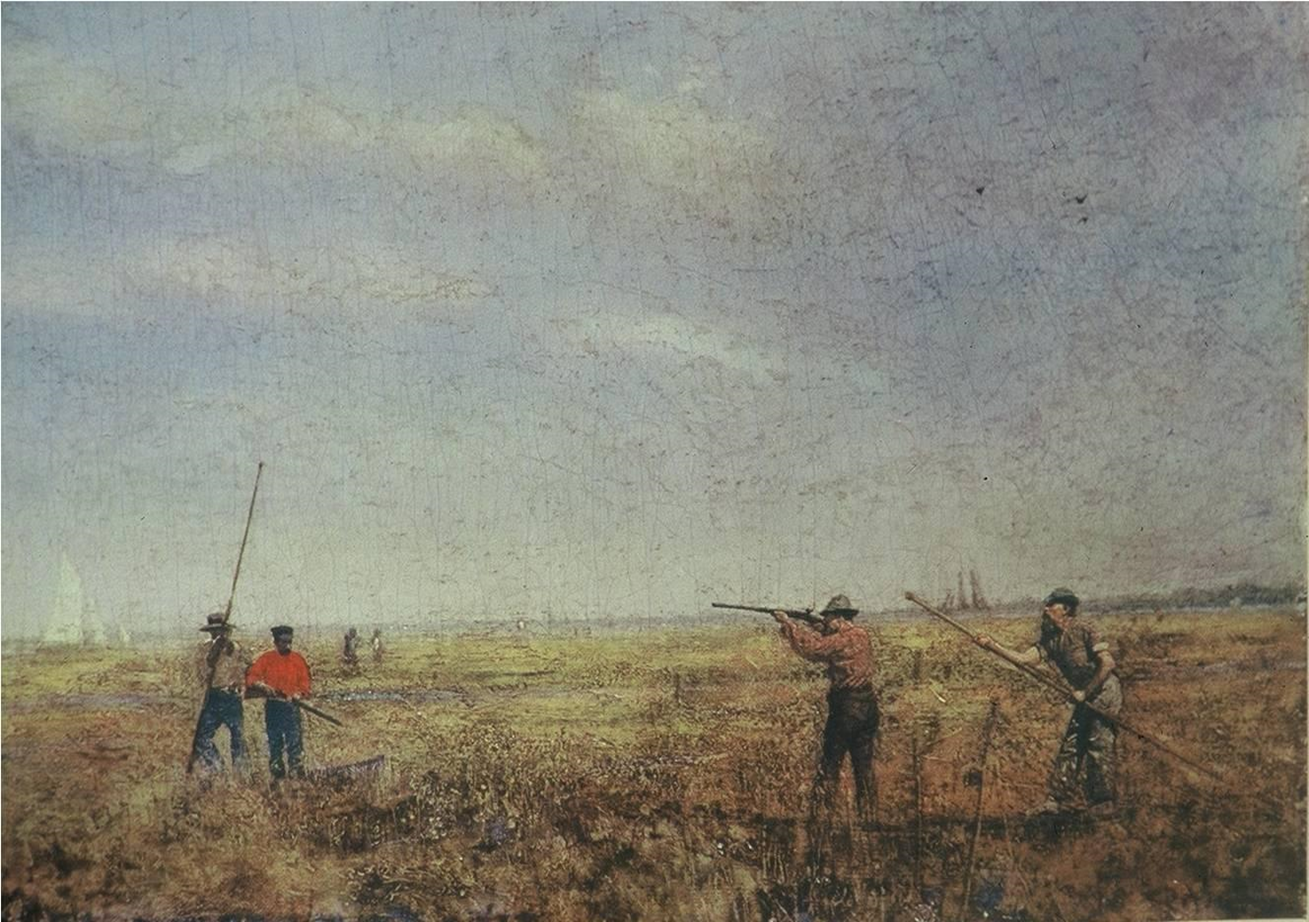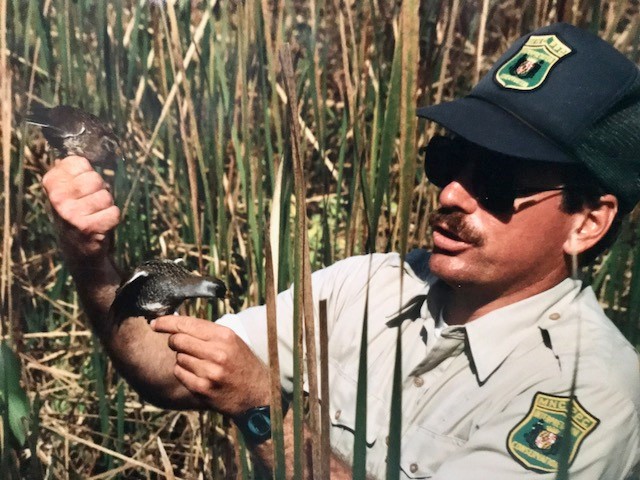

Nestled near the middle of the Patuxent River stands Jug Bay — the largest freshwater tidal wild rice (Zizania aquatica) marsh in Maryland. It boasts a unique and rich history intertwined with the region’s abundance of migrating Sora (Porzana carolina). These elusive birds have drawn hunters to the Patuxent for over 200 years. Historical logs from local gun clubs paint a vivid picture of Jug Bay’s allure, including one staggering account of just three hunters, from one of the clubs, bagging a remarkable 1,800 Soras in six hours. These accounts are seen over and over at the four gun clubs located at Jug Bay and attest to the astronomical numbers of Soras that once migrated and were harvested here.
However, beyond mere sport and sustenance, Jug Bay’s Sora population has become a focal point for scientific inquiry. The late biologist Brooke Meanley’s mentorship and initial intrigue with these birds inspired naturalist, Greg Kearns, to begin his own research on Soras in 1987.
Despite initially doubting Meanley’s suggestion that he could devote three decades to studying Soras, thirty-five years have passed, and Kearns has banded over 5,200 Soras, chased radio-telemetered birds in planes, boats, and cars, and improvised new technologies to fit research needs.
Accurately determining the sex of individuals is vital for conservation management, wildlife monitoring, and understanding population dynamics. However, distinguishing between males and females within the Rallidae family is often challenging, thus illuminating the need for a standardized method.
Our publication, “Utilizing Morphometrics for Sex Determination of Adult and Juvenile Soras (Porzana carolina),” leverages Jug Bay’s Sora abundance to address the lack of sex determination techniques for this species. We explored a combination of DNA samples, morphometrics, and plumage characteristics. Amidst mounds of data, a model integrating culmen and tarsometatarsus length emerged as the most accurate predictor of sex. The prospect of further exploration in this realm is exciting, with once-daunting tasks like sexing Soras in the field now is now possible with a heightened level of precision, paving the way for future advancements in this domain.

Alex Pellegrini and Greg Kearns
The results of this study were recently published in the Journal of Field Ornithology:
Dami, K. A., A. D. McQuarrie, M. Lewis, A. G. Pellegrini, A. M. McDonough, and G. D. Kearns. 2024. Using morphometrics to sex adult and juvenile Soras (Porzana carolina). Journal of Field Ornithology 95(1):11. https://doi.org/10.5751/JFO-00413-950111
Header photo: Sora (Porzana carolina). Photo by Karel Bock | Getty Images
